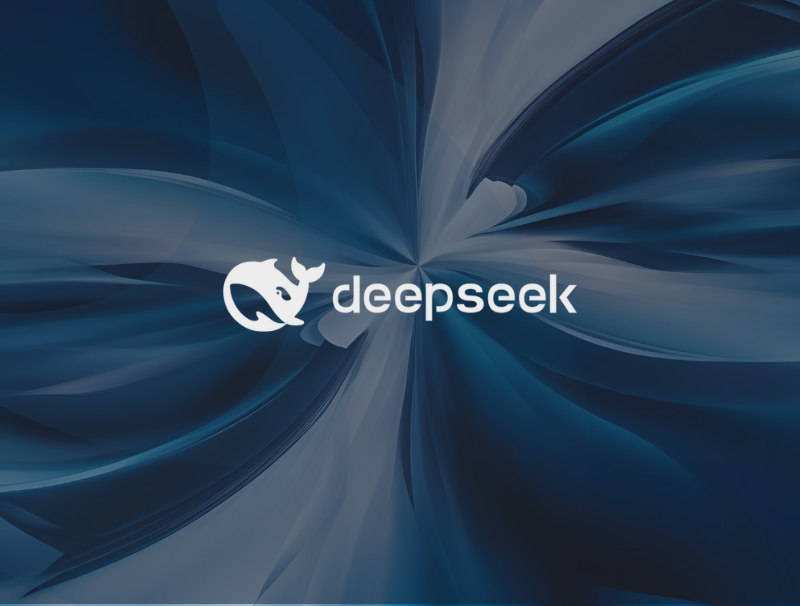The Evolving AI Landscape
Feb 19, 2025

The AI landscape is evolving at an impressive speed. While ChatGPT has long been the poster child for generative AI, new players like DeepSeek are challenging the status quo. Built for under $6 million (allegedly, even though there are claims that they used infrastructure from a hedge fund, which significantly raises the total price, we will have to wait and see if more details emerge), DeepSeek is democratizing access to generative AI, making it more affordable and accessible for startups and enterprises alike. This shift is raising questions about the sustainability of current AI business models, which have historically required billions of dollars to build state-of-the-art large language models (LLMs).
The Rise of Openness in AI
One of the most important shifts in this evolving AI landscape is the increasing openness of AI models. Unlike OpenAI, which keeps much of its technology behind closed doors despite its name, newer players like DeepSeek are embracing transparency, but only partially.
When it comes to openness, AI models can be categorized into three levels:
- Open Weights: This allows developers to access and modify the “brain” of an AI model, enabling them to fine-tune it for specific tasks. Their model weights are open, and the training method is published in a paper. However, the implementation of the training process itself is not open-source, though projects like Hugging Face are already working to reproduce the full training pipeline based on the published paper.
- Open Code: This provides insight into how the code works, enabling developers to understand and modify the underlying architecture.
- Open Dataset: This reveals the datasets used for training, offering transparency into the data that shaped the model.
DeepSeek, like Meta’s LLaMA, is primarily open weights. While this is a step toward transparency, it’s not fully open-source. For instance, the dataset used to train DeepSeek’s models remains undisclosed. A model can only be considered fully open-source when all three elements—open weights, open code, and open dataset—are available to the public.
Platforms like Hugging Face are pushing the envelope further by enabling full model reproduction, fostering a collaborative ecosystem where developers can learn and innovate from the ground up. This move toward openness isn’t just about accessibility, it’s about creating a shared knowledge base that drives progress without requiring billion-dollar budgets.
The Licensing Debate: DeepSeek vs. LLaMA
Another aspect of openness is the licensing of AI models. Licensing terms can significantly impact how developers and businesses use these models. Let’s compare DeepSeek and LLaMA:
| Aspect | DeepSeek | LLaMA |
| Model Name Attribution | Not required | Required (e.g., “Llama-ModelName”) |
| Commercial Use | Permitted (details TBD) | Restricted beyond a certain scale |
| Dataset Transparency | Not disclosed | Not disclosed |
For example, LLaMA’s license mandates that any AI model derived from its technology must include “Llama” in its name. Specifically, Meta states:
“If you use the Llama Materials or any outputs or results of the Llama Materials to create, train, fine-tune, or otherwise improve an AI model, which is distributed or made available, you shall also include ‘Llama’ at the beginning of any such AI model name.”
This means a developer can’t freely name their model. Meta enforces branding consistency. While this might protect Meta’s intellectual property, it can be frustrating for developers looking for greater branding flexibility. It remains to be seen how DeepSeek’s licensing terms compare and whether they impose similar constraints.
On the other hand, DeepSeek’s licensing terms appear to be more permissive, though the specifics are still emerging. This could make DeepSeek a more attractive option for developers and businesses looking to build and deploy AI solutions without restrictive branding requirements. As the AI landscape matures, licensing will play a crucial role in determining which models gain widespread adoption and which are sidelined due to their limitations.
The Shift to the Application Layer
As generative AI becomes more accessible, the battleground is shifting. The focus is no longer on who builds the best models but on who creates the most value at the application layer. Generative AI, including tools like ChatGPT and DeepSeek, holds huge potential, but its true value is realized when applied to solve real-world problems. Tomorrow, we might see a new winner in this space, one that’s completely free to use. The focus is shifting to the application layer and the true value delivered to end customers.
Predictive AI-powered by technologies like graph transformers is already delivering actionable insights today. For example:
- Retailers are using predictive AI to forecast demand with 95% accuracy, reducing waste and improving profitability.
- Healthcare providers are leveraging it to create personalized treatment plans based on patient data.
- Logistics companies are optimizing supply chains in real-time, cutting costs and improving delivery times.
SmartCat’s Positioning in the AI Ecosystem
At SmartCat, we’re at the forefront of this transformation. As AI tools become cheaper and more accessible, we’re focused on building AI-driven applications that bridge the gap between potential and tangible results. Our approach is rooted in the horizontal solutions that are touching more than one industry and are divided by layers from infrastructure where solutions are hosted to application layer that is closer to customer:
Layer 1 – Infrastructure – Infrastructure components that can be used to build out generative AI applications, such as compute, network and storage. Nvidia is king on this layer, basically these are chips and machines that are needed for inference and training and this market segment is off the record for software companies
Layer 2 – models and datasets – in order to work on an AI project you need to have data or models. Big companies such as Axel Springer and other publishers are monetizing data through API and subscriptions. Other companies such as Open AI are putting models behind API and monetize on subscription. This layer of market is also not interesting to software companies such as SmartCat
Layer 3 – AI engineering tools which are building blocks and application agnostic such as model- and data-centric solutions. Vector Databases fall in this category, these are equal to PostgreSQL or Kafka in non AI world. Different frameworks and platforms fall into this category as well such as DataBricks and LangChain. This layer is good to keep an eye on, we should be partners with leaders from this layer and we can even approach vendors in this layer to build portions of their stack
Layer 4 – applications that are solving some specific problem for various verticals that rely on building blocks from layer 3 are in this category. AI assistants that can be used in LegalTech, HealthCare but also sales bots and coding assistants. This is are primary positioning
Value Over Infrastructure
The infrastructure battle will continue, but the real positioning lies in the applications we create. Generative AI may represent the future, but predictive AI is delivering value today. At SmartCat, we’re bridging this gap by building AI solutions that solve real problems and drive business outcomes. The future of AI isn’t just about who builds the best models, it’s about who uses them to create the most value.
Contact us to learn more about how we’re transforming industries with AI applications.




